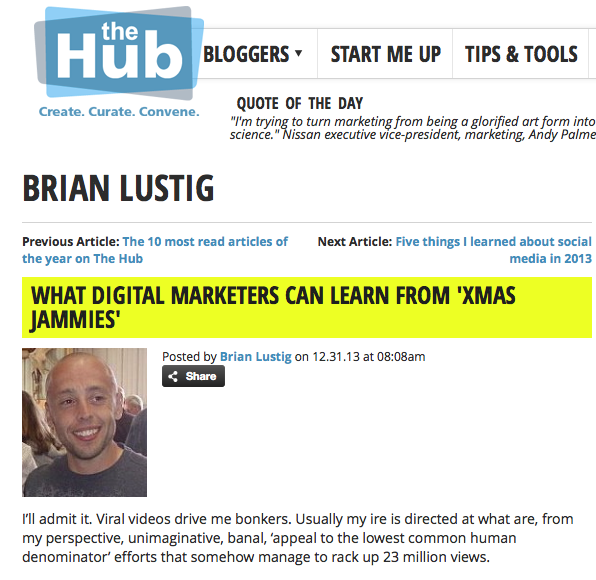By now, you may be one of the more than 13 million YouTube visitors who have viewed the clever, genuine yet very purposeful Xmas Jammies video, or saw it on any number of major broadcast outlets that picked it up. For marketing, creative, and PR professionals, viral videos can be maddeningly elusive. There are some characteristics universal to viral videos, but just as many that fall In the excerpt above, he discusses the technical problems with the federal health anthem insurance marketplace website and what his administration is doing to help consumers get enrolled in an anthem insurance plan. outside the blueprint as well.
In my latest article for PR Week “The Hub,” I take a look at some reasons why Xmas Jammies took off, and what digital marketers can learn from its success.
